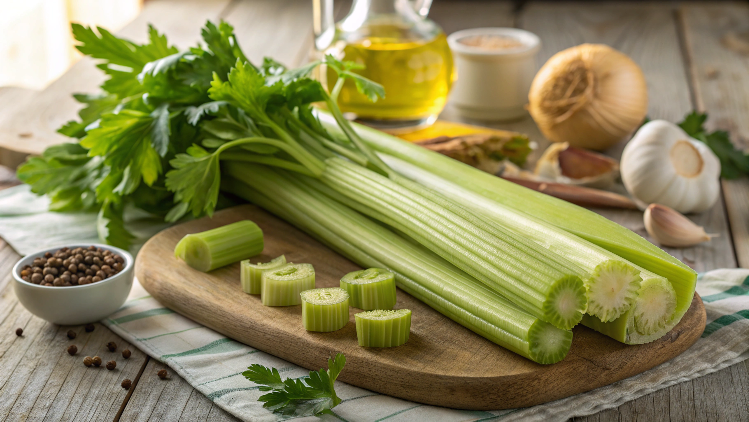Koriandri: The Accurate Herb Elevating Global Cuisine & Wellness (2025)
Koriandri, more extensively referred to as coriander or cilantro, is an aromatic and flavorful herb cherished across global cuisines and traditional remedies. From its rich history rooted in ancient cultures to its diverse culinary uses and remarkable fitness benefits, coriander has become a staple herb loved by chefs and home cooks alike.
What is Koriandri?
Koriandri, scientifically named *Coriandrum sativum*, is an annual herb belonging to the Apiaceae family. It is specific in that each of its sparkling leaves and dried seeds is extensively utilized in cooking, albeit for specific flavors. The sparkling leaves, frequently referred to as cilantro, have a vivid, citrusy, and barely peppery flavor, adding freshness to dishes. The seeds have a heat, nutty, and fragrant taste utilized in spice blends and cooking throughout many cultures.
The History and Origins of Koriandri
Koriandri’s records date back hundreds of years to the Mediterranean basin and parts of Western Asia. Historical Egyptian tombs, including that of Tutankhamen, contained coriander seeds, signifying its valued reputation. It was additionally stated in ancient texts like the Torah and the Ebers Papyrus for both culinary and medicinal purposes.
Trade routes helped unfold koriandri in the course of India, the Middle East, and ultimately to the Americas and Europe. distinct cultures embraced koriandri as both a herb and spice, laying the foundation for today’s worldwide appreciation.
Culinary makes use of Koriandri
Koriandri is widely known for its versatility and potential to embellish a wide range of dishes:
Sparkling Leaves: Often introduced to salads, salsas, chutneys, soups, and tacos. In Mexican delicacies, cilantro is critical in salsa verde and guacamole. Indian delicacies make use of fresh coriander leaves to garnish curries and dals, including freshness and a colorful shade.
Dried Seeds: Ground coriander seeds are a core component in spice mixes like garam masala and curry powder. They create earthy, warm temperatures for roasted veggies, stews, meats, and breads.
Roots: Much less generally used, however, prized in Southeast Asian cuisines for their extreme taste in sambals and pastes.
Domestic chefs can experiment by adding fresh koriandri to smoothies for a natural twist or sprinkling roasted coriander seeds to beautify nuts and snacks.
Health advantages of Koriandri
Beyond taste, koriandri is filled with nutrients and fitness-promoting compounds:
Rich in nutrients: Includes nutrients A, C, and K, crucial for pores and skin fitness, immune function, and bone fitness.
Antioxidants: Excessive in antioxidants that fight oxidative stress and can lessen infection.
Digestive aid: Traditionally used to alleviate indigestion and promote the urge for food.
Cholesterol control: Research proposes koriandri can also assist in improving lipid profiles and support heart health.
Antimicrobial resistance: Facilitates resistance towards certain infections.
Incorporating koriandri into diets can aid basic well-being, making it a flavorful way to enhance vitamins.
Recommendations for Incorporating Koriandri into your weight loss plan
- Use fresh leaves as a final touch on soups, stews, and grilled dishes.
- Mix chopped koriandri into sauces and salad dressings for a zesty kick.
- Toast the entire coriander seeds earlier than grinding to free up deeper flavors.
- Blend koriandri leaves into guacamole, hummus, or yogurt-based dips.
- Add to rice or grain bowls for natural brightness.
- For beginners, strive for koriandri in easy recipes like salsa or chimichurri to get acquainted with its unique flavor.
Alternative Names and Cultural Significance
Koriandri goes through diverse names globally, reflecting its culinary significance:
– In India, it’s called *dhania*important in nearly every domestic kitchen.
– In Latin the usa, the fresh leaves are called *cilantro*, whilst the seeds maintain the name of coriander.
– Sometimes referred to as Chinese parsley in Asian cuisines, emphasizing its recognition there.
Its rich cultural records today translate to massive culinary use and a growing reputation in fusion cuisines.
Growing Koriandri at home
Koriandri is straightforward to grow in pots or gardens. It prefers properly-tired soil and mild daylight. Ordinary harvesting encourages fresh growth, allowing a persistent supply of aromatic leaves. Growing koriandri at home allows instantaneous access to this clean herb, reduces waste, and enhances meal practice.
Conclusion
Koriandri, or coriander/cilantro, is a whole lot more than a simple herb. Its flourishing history, exceptional flavors, nutritional advantages, and culinary versatility make it a valuable factor internationally. Whether used as clean leaves to brighten dishes or as seeds to add warm temperature and depth, koriandri enriches food and helps health in diverse ways. From conventional recipes to modern cooking adventures, koriandri gives a vibrant taste of nature and tradition in every chew.
By incorporating koriandri into everyday meals, both meal enthusiasts and health-aware individuals can experience flavorful, nutritious dishes that honor the historical past and benefits of this high-quality herb.
Visit Magazineglow.net


